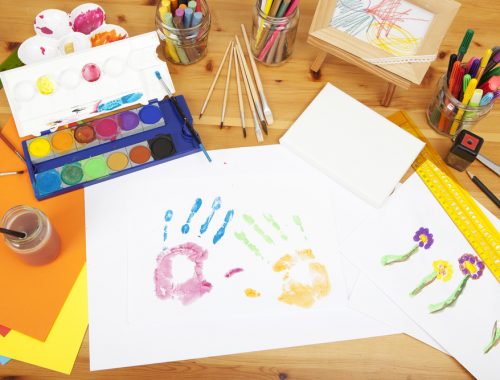 When you move your baby from a crib to a bed it’s official: they’re not a “baby” anymore. When a child gets tall enough that they can actually reach over the crib bars it is time to move them into a bed, or else you risk dangerous accidents. But here comes the fun part: that child is no longer confined to a cage…er, crib, anymore. They can, and will, get up and move around, wander about, and come and find you. Frequently. How do you make the transition easier and faster?
When you move your baby from a crib to a bed it’s official: they’re not a “baby” anymore. When a child gets tall enough that they can actually reach over the crib bars it is time to move them into a bed, or else you risk dangerous accidents. But here comes the fun part: that child is no longer confined to a cage…er, crib, anymore. They can, and will, get up and move around, wander about, and come and find you. Frequently. How do you make the transition easier and faster?
Before the transition:
- Make sure the child has a regular bedtime. This means they will begin feeling sleepy around the same time every night. Starting bedtime suddenly when coupled with a new kind of bed is a surefire guarantee for temper tantrums.
- Start pointing out all the “big kid” beds their friends and relatives have. Extoll the virtues of being able to sleep in a bed, to be able to get up and go potty when needed, to have more space to enjoy. Also, encourage them to think of a big bed as a big step to being a big boy or girl. Kids this age are very competitive and very possessive: if someone else has it, they want it.
- Don’t introduce the bed while still potty-training. One big transition at a time, please. Anyone who has dealt with a toddler knows they don’t multi-task well. All you will get yourself is a confused, angry and often rebellious toddler who wets the bed…then comes and gets you to clean it up.
The Big Day:
- Make it a big deal. Some parents take their child out shopping with them and allow them to pick out their “big boy” or “big girl” bed, complete with sheets and a new bedspread. This is a great way to help your child feel a sense of pride and ownership in their new bed, and they will want to sleep in it. If you don’t have the economic means to buy a new bed and rely on hand-me-downs, or your child’s crib converts into a bed, still try to make it a special occasion. Allow your child to “help” convert the bed, or conduct a special christening ceremony to welcome the new bed to the nursery. As long as they feel the bed is a privilege and something exciting, they will usually want to sleep in it.
- Make it a special place. Make the bed an inviting place to be, replete with their favorite stuffed animals. Let them sit on and play on and around the bed during the day, to grow accustomed to it.
- Move bedtime up a bit. On the first night, consider advancing bedtime ahead by an hour. This will give you time to deal with any problems without depriving them of too much sleep.
- Safety first. Make sure the bed has side rails, is low enough to the ground to permit them to get out safety, and doesn’t have a gap between the bed and wall where little hands, heads (yes, heads) or toys can disappear…or where the Boogeyman could conveniently take up residence. If you only have a twin bed to give your child, take away the frame and let them sleep on the mattress by itself for a while. It might not look great, but it’s safer and more comfortable for a small child than having to climb into and out of a high bed.
Dealing with the change:
- Start a ritual. If you haven’t already, seriously consider making a bedtime tradition. Bathtime, a story, a tuck-in ceremony complete with a song or special poem, all of these things make the child feel special and want to go to bed at night.
- Don’t sleep with them. Unless you have to. Many mums find it is really hard to let their child cry, and find it even harder to keep their child in bed if they want to get out. Some children want mom to climb into bed with them, and although it is best not to (because it caters to their insecurity too much), sometimes a nice cuddle in the bed is what they need. Try to leave before they fall entirely asleep, or they might wake and come searching for you later.
- Stay close by, but ease away gradually. It’s not a bad idea to sit next to the bed for a while once the lights are out. Don’t talk a lot; assure them you are there for them, but defer conversations for the morning. Over the course of several days move your chair further away, until eventually, you are in the doorway. It won’t take long before they don’t even realize you aren’t there.
- Watch the naptime effect. Many toddlers go through a transition in their sleep needs between 2-3 years, where they need their daytime nap less and less, but habitually still will go down for it. These children will rebel at bedtime because they truly aren’t sleepy yet. Others are so jaggedly over-tired they pitch fits when you try to put them down at bedtime. For the one group, eliminate or cut back on the daytime nap, and try to ease it to an earlier time slot to make bedtime simpler. For the other group, bring bedtime forward. Both methods will ease bedtime substantially.
- When in doubt, take a step back. Sometimes a child just isn’t ready for the big bed yet. If you have reached the end of your patience and your child is inconsolable after a lot of tries, bring back the crib for a week or maybe longer. Invest in a crib tent or lower the crib mattress so the railing is higher. But leave the bed in the room, and let them play on it. Maybe even nap with them on it occasionally during the day. Eventually your child will realize they prefer the bed and will make the transition on their own.
– JB
Photo: The Larkin Sleigh Bed, Pottery Barn Kids

